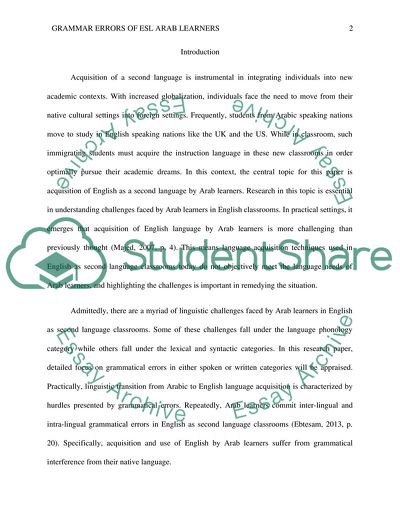Cite this document
(Grammar Errors of ESL Arab Learners Coursework Example | Topics and Well Written Essays - 2000 words, n.d.)
Grammar Errors of ESL Arab Learners Coursework Example | Topics and Well Written Essays - 2000 words. https://studentshare.org/humanitarian/1851121-grammatical-errors-of-english-as-a-second-language-arab-learners
Grammar Errors of ESL Arab Learners Coursework Example | Topics and Well Written Essays - 2000 words. https://studentshare.org/humanitarian/1851121-grammatical-errors-of-english-as-a-second-language-arab-learners
(Grammar Errors of ESL Arab Learners Coursework Example | Topics and Well Written Essays - 2000 Words)
Grammar Errors of ESL Arab Learners Coursework Example | Topics and Well Written Essays - 2000 Words. https://studentshare.org/humanitarian/1851121-grammatical-errors-of-english-as-a-second-language-arab-learners.
Grammar Errors of ESL Arab Learners Coursework Example | Topics and Well Written Essays - 2000 Words. https://studentshare.org/humanitarian/1851121-grammatical-errors-of-english-as-a-second-language-arab-learners.
“Grammar Errors of ESL Arab Learners Coursework Example | Topics and Well Written Essays - 2000 Words”. https://studentshare.org/humanitarian/1851121-grammatical-errors-of-english-as-a-second-language-arab-learners.


